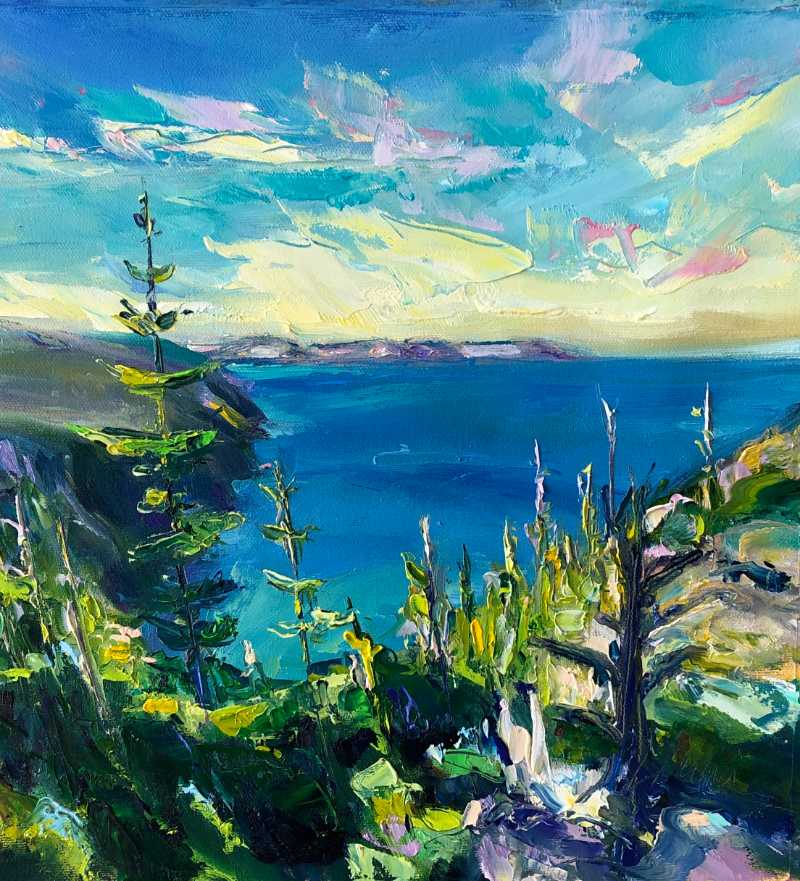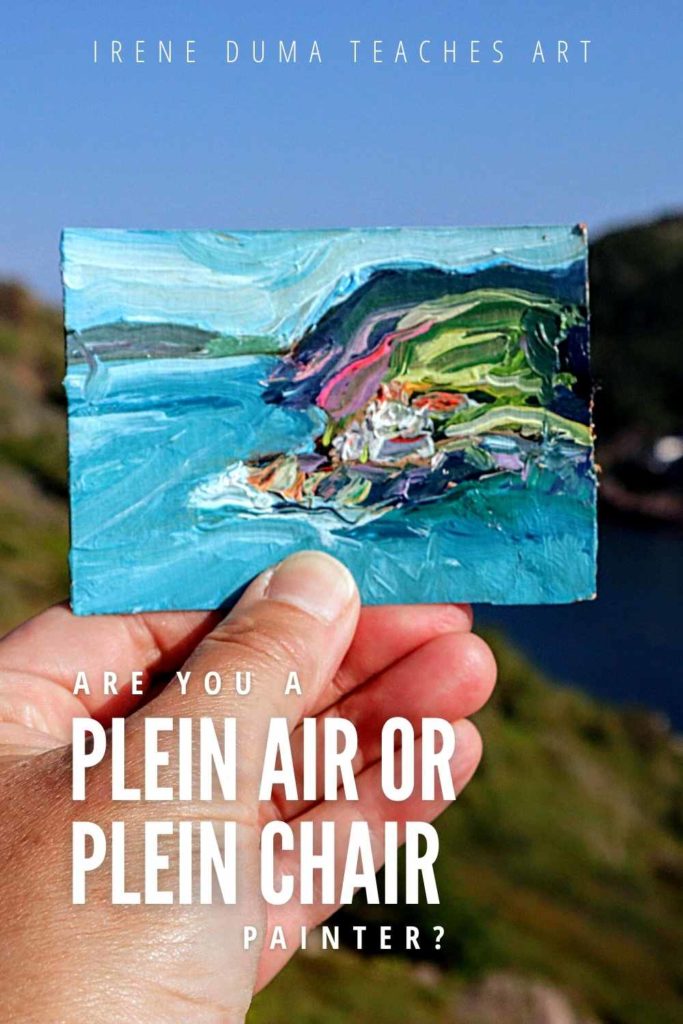It was as if a veil was torn from my eyes; I had understood. I grasped what painting could be.” ~ Claude Monet when introduced to plein air painting.
Do I paint en plein air? Not yet.

This week, I painted this 12″ x 12″ in my studio over 3 mornings before going to work. That means that technically this is not an alla prima painting (painted all in one sitting), but a wet-in-wet painting. Does that matter? No. There are no awards for sticking to alla prima technique.
There are however, lots of awards for plein air painters.
What is plein air painting?
Plein air is just the French word for outdoors so it’s not technically a technique — it’s just describing a location. When you are painting en plein air, it means you are painting outdoors.
And it turns out, this is a rather new idea. Before metal paint tubes were invented in 1841, painters were tied to their studios. They mixed their own paint in small batches, and stored it in pig bladders (!) that were leaky and known to rupture.
But when the new metal tubes arrived on the scene painters, painters were quick to catch on to their advantages. They weren’t leaky. They kept paint from drying indefinitely. They came with a handy screw top. And painters could now keep a lot of pre-mixed colours ready to go in the studio. Before paint tubes were invented, painters mixed batches of paint as needed because if they didn’t get to it in time, it would dry up and be wasted.
But maybe most excitedly of all, the new paint tubes were portable — painters could now leave the confines of their studio and paint outdoors. They could set up their easel in front of the subject, and paint directly from nature, watching the changing light in real time with their own eyes.
And thus, impressionism was born.
“Without colors in tubes, there would be no Cézanne, no Monet, no Pissarro, and no Impressionism.”
Pierre-Auguste Renoir
Contemporary plein air painting
Plein air painting today is quite popular. Many teachers and web sites often extol the virtues of painting outside as if it were the only true way to paint. But, there is no difference between a painting painted outside or inside. Or by someone standing on their head. Or with their foot in a bucket. A painting is a painting is a painting.
What plein air has become is somewhat of a marketing term. There are plein air magazines, and plein air festivals where painters come from all over to paint, participate in workshops, and yes, maybe win awards.
And there’s nothing wrong with that. Sounds fun actually. I have even added “attend a plein air festival” to my bucket list.
So, why am I a plein chair painter?
I’ve taken a plein air course and tried it on my own a few times. And what I have to say is this — it’s challenging! In Ontario I was covered by mosquitos (ugh, I am a mosquito magnet, so this was very unpleasant). In Newfoundland the clouds move so fast that every time I looked at the sky, it was completely different.
Recently I was painting downtown St. John’s with a group of urban sketchers, when a Van parked right in front of me, blocking my view.
Plus there’s the issue of the changing colour of the light. Morning light is cool. Afternoon light is warm. This means that in just a few hours, everything you’ve painted looks wrong.
Then there’s the wind, rain, and sunstroke to deal with. Inquisitive people stopping to chat (it’s nice, but there goes that cloud again).
And you’ll need the right equipment: a lightweight but sturdy easel that won’t be too heavy to carry, but will withstand all the tossing around. You might need an umbrella to keep the direct sun off your painting, and your head. And you’ll need a way to carry your wet oil paintings home without them getting smudged.
You also have to remember to bring everything! So far I’ve forgotten something on every excursion. Paper towel the first time. Something to put the dirty paper towels in the second time. Sunscreen the third time etc. I’ve made a checklist now that has helped.
So while I do have plein air painting on my bucket list, because I love being outdoors, for now I will content myself with being a plein chair painter. Painting away in the safety of my studio from photos that I’ve taken on hikes seems a pretty good compromise until I can figure out how to get those clouds to stop moving.
My recommendation for beginners is to start painting in an environment that won’t challenge you. Figure out your tools and how everything fits together without worrying that the wind will blow it all away.
Once you get the hang of painting, you can move it outdoors. Try the backyard first. Look for a knapsack to carry it all. Test some hats. Get some leakproof jars. See firsthand how the bright sun glaring on your surface makes it difficult to paint. And then when you have got the backyard mastered, then yes, b’y, go for it! Take her on the road!
And now I would love to hear from you. Are you a plein air painter? How do you deal with subjects that move? Can you recommend a plein air easel? The selection is huge — how do we know which one is best. Or maybe I should get a pochade box? They are so cute!


Leave a Reply